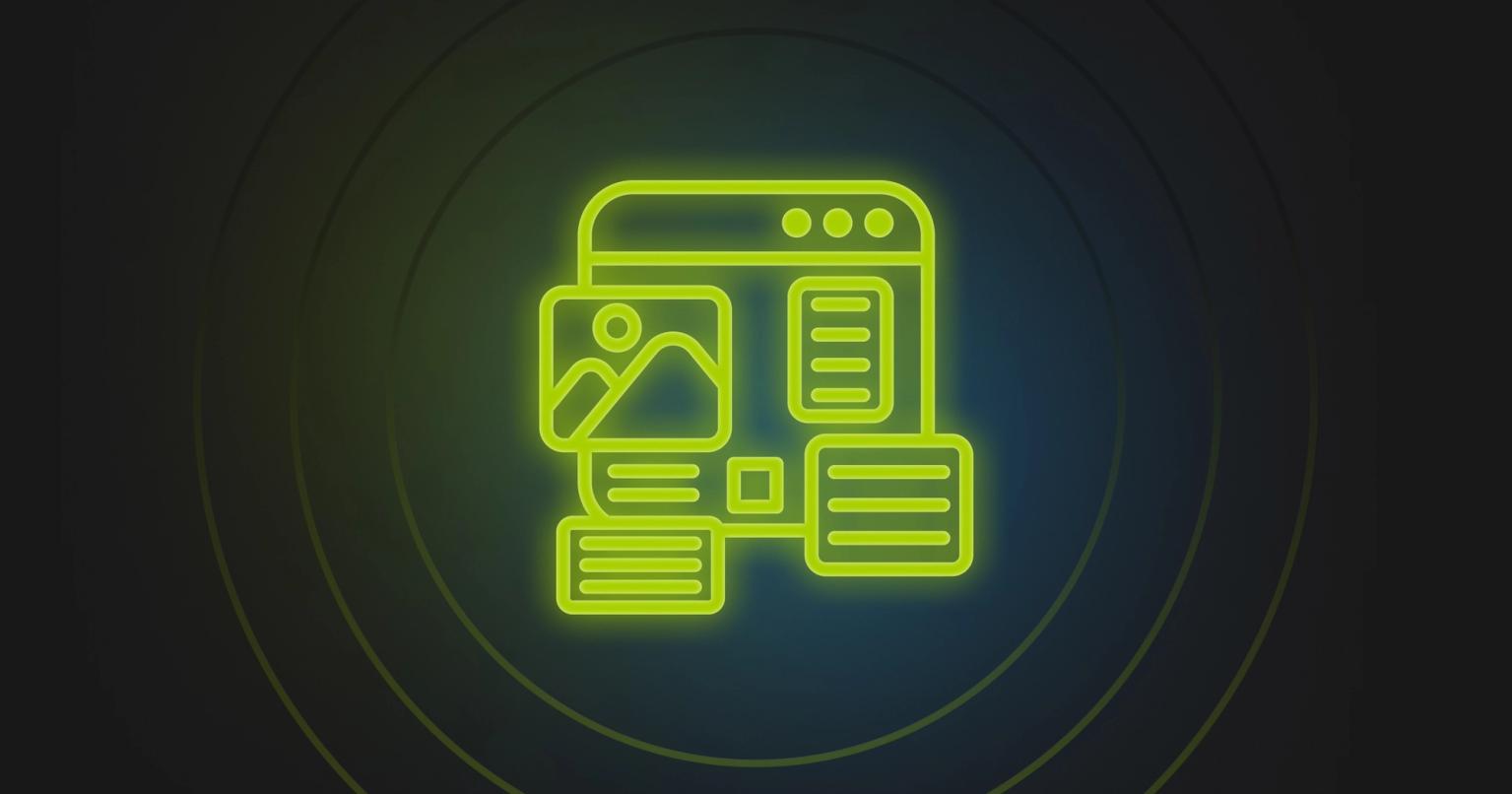The technical architecture of enterprise email campaign orchestration

Summary
Discover how enterprise email orchestration connects tools, teams, and data to deliver fast, scalable, and compliant campaigns.
Enterprise email marketing operates at the intersection of creativity and complex technical systems. With 53% of marketing teams requiring multiple weeks to produce a single email campaign, the challenge extends beyond design or content into orchestrating dozens of interconnected systems, managing data flows across platforms, and maintaining governance at scale.
The modern enterprise email stack has evolved into a sophisticated ecosystem where Marketing Automation Platforms (MAPs), Customer Data Platforms (CDPs), design tools, collaboration systems, and compliance frameworks must work in perfect harmony. Understanding how these pieces connect and where they create friction reveals why email campaign creation remains one of marketing's most persistent operational challenges.
The martech integration challenge
At the heart of enterprise email operations lies a fundamental integration problem. Marketing teams typically juggle 15-20 different tools in their stack, each speaking its own technical language. A typical email campaign touches design systems like Figma, Adobe XD, and Sketch where creative vision begins.
It flows through Marketing Automation Platforms including Marketo, Salesforce Marketing Cloud, Eloqua, and HubSpot where campaigns execute. Work management happens in Workfront, Monday.com, or Asana where projects coordinate. Asset management systems like Bynder and Brandfolder house approved content. Analytics platforms from Google and Adobe measure performance. Compliance tools like OneTrust and TrustArc manage privacy requirements.
The challenge involves more than just connecting these systems. Teams must maintain data fidelity, design integrity, and governance controls as campaigns flow through each touchpoint. When Google Cloud evaluated their email workflow, they discovered that integration gaps were creating $2 million in unnecessary costs annually, primarily from manual handoffs and rework between systems.
Why integration failures create organizational paralysis
The real cost of poor integration extends far beyond IT budgets. Marketing operations teams report experiencing "swivel chair syndrome," constantly switching between platforms to manage various campaign aspects. Each platform transition introduces error opportunities and delays that compound across the organization.
As one sales professional noted, organizations often start with fragmented tools: "A lot of orgs still use Google Sheets when they're making a request. When a marketer has to put a brief in there, open up their ticket, and they have to create their copy and their brief, it's like poor quality images and text just on a Google sheet, and then that goes to a different team." This fragmentation creates a cascade of inefficiencies. What should be a simple campaign update becomes a multi-day coordination exercise across teams and time zones.
The human cost is significant. Marketing teams report frustration with systems that force them to be "reviewers" rather than creators. When asked about pain points, practitioners consistently cite the slow SLAs between creative teams and marketing operations teams. A campaign that could launch in hours gets stuck in technical handoffs for weeks, missing market opportunities and demoralizing teams who know they could move faster with better tools.
The technical anatomy of campaign flow
Understanding how campaigns actually move through enterprise systems reveals where friction occurs.
1. The design-to-code translation layer
The most significant technical bottleneck occurs at the design handoff. When creative teams complete designs in tools like Figma, those files are essentially static mockups that must be translated into table-based HTML with inline CSS. This completely different technical paradigm is required for email rendering.
This translation involves converting modern CSS Grid and Flexbox layouts to nested tables, inlining all CSS properties since email clients strip style tags, creating fallbacks for the 15,000+ email client and device combinations, managing dark mode rendering variations, and implementing VML fallbacks for Outlook.
Industry data shows 80% of companies using traditional design-to-code workflows need approximately one week per email. The technical complexity means even minor revisions can trigger complete rebuild cycles. Picture this: a marketing manager spots a typo, changes a comma to a period, and suddenly the entire email needs to be recoded from scratch.
The hidden cost of email client complexity
Beyond the initial build, teams face ongoing battles with email client inconsistencies. As one practitioner described the daily reality: "This renders fine on Gmail, but it doesn't on Outlook or this doesn't look good on mobile. And so a lot of times, customers will spend a lot of time and get frustrated with trying to play with the code."
This creates real business impact. When 43% of emails are opened in dark mode, campaigns that don't render correctly alienate nearly half the audience. Yet most teams lack the technical expertise to implement proper dark mode support, leaving money on the table with every send.
The desperation is evident in how teams try to solve these problems. One marketer admitted to using ChatGPT to generate HTML code: "She would just copy and paste it into the email, and she said it would never look great." Even AI assistance can't overcome the fundamental complexity of email HTML, leading to subpar results that damage brand perception.
2. Dynamic content and personalization architecture
Modern enterprise campaigns require sophisticated personalization that goes beyond merge tags. The technical stack must support token management where Marketing Automation Platforms use proprietary token systems. Marketo uses {{lead.tokens}} while SFMC uses AMPscript. These tokens must be preserved through the creation process. When campaign assets sync between systems, these tokens often break or require manual recreation.
API data flows power real-time personalization, pulling from multiple sources including CDP segments for real-time behavioral data, CRM fields for account and contact data, product catalogs for inventory and pricing, and preference centers for consent and communication preferences.
The orchestration challenge involves making these data streams connect reliably while maintaining performance. A single personalized email might make 10+ API calls at send time.
The business impact of personalization barriers
The struggle with dynamic content affects strategic decisions. Sales teams report that personalization comes up on "almost every single sales call," yet most organizations can't execute it effectively. One practitioner described the typical scenario: "I can't do dynamic content. This is impossible. How do I learn AMPscript?"
This technical barrier creates a competitive disadvantage. While personalization can dramatically improve campaign performance, the complexity of scripting languages like AMPscript or Velocity keeps it out of reach for most marketing teams. Organizations know they need personalization to compete in today's market, but they're blocked by technical requirements that their teams can't meet.
The result is a painful compromise. Either campaigns go out without personalization, reducing effectiveness, or they wait in queue for scarce technical resources, reducing speed to market. As one sales professional observed, "the barriers are things like scripting specifics. So it's just complicated and there's probably bottlenecks and they either don't do it well, but they want to and they know they have to in order to survive."
3. Compliance and governance infrastructure
Enterprise email requires multiple compliance checkpoints across technical and brand requirements. Technical compliance includes CAN-SPAM footer requirements with physical address and unsubscribe links, GDPR consent verification, CASL implied consent rules, and industry-specific regulations like HIPAA for healthcare or specific rules for financial services.
Brand compliance demands approved color palettes with specific hex codes, font licensing and web font compatibility, logo usage and clear space requirements, and legal disclaimer variations by region.
These requirements must be enforced programmatically. Manual checking doesn't scale when teams send hundreds of campaigns monthly across dozens of markets.
The modern integration architecture
Leading enterprises are adopting integrated platforms that create abstraction layers between these technical complexities. The architecture typically involves several key components working together.
Central integration hub
Rather than point-to-point integrations, successful implementations use a central platform as the integration hub. This hub maintains authenticated API connections to all systems, preserves data fidelity during transfers, provides version control and rollback capabilities, and enables audit trails for compliance.
For example, when DISH Network centralized their email operations, they reduced campaign build time from 15 business days to 8 days by eliminating integration friction between their design tools and Marketo instance.
Modular component architecture
Instead of building complete emails from scratch, enterprises are adopting modular systems. Pre-coded, tested components include headers, product grids, and CTAs. Components maintain MAP-specific code like AMPscript or Velocity. Teams can drag and drop to assemble campaigns without breaking underlying code. The system automatically handles responsive and dark mode rendering.
Real-time synchronization
Modern platforms provide real-time, bidirectional sync with MAPs through OAuth-based authentication without credential storage, asset push via native APIs rather than file exports, preservation of dynamic content and personalization rules, and automatic folder structure and naming convention enforcement.
The "syncing to Marketo is MONEY" sentiment from practitioners reflects how critical this seamless integration has become.
Orchestration best practices
Based on enterprise implementations, several patterns emerge for successful orchestration.
1. API-first architecture
Everything must be accessible via API, including RESTful endpoints for all operations, webhook support for real-time updates, bulk operations for large-scale changes, and rate limiting to prevent system overload.
2. Distributed governance model
Rather than centralized control, successful implementations use template-level permissions controlling who can modify structure, content-level flexibility determining who can change copy and images, automated brand compliance checking, and role-based access control (RBAC) with SSO integration.
3. Progressive enhancement strategy
Not all teams need all capabilities immediately. Organizations start with basic drag-and-drop for simple campaigns, add dynamic content capabilities as teams mature, introduce interactive elements like AMP for advanced users, and layer in AI assistance for optimization.
The platform layer solution
Campaign creation platforms serve as the orchestration layer, sitting between design tools and marketing automation. They provide technical abstraction by hiding email HTML complexity behind visual interfaces while maintaining code quality for optimal rendering. Integration middleware includes native connectors to major MAPs that preserve all technical elements during transfer.
Governance automation programmatically enforces brand standards, compliance requirements, and approval workflows. Performance optimization includes built-in testing across email clients, accessibility checking, and load time optimization.
Security and compliance orchestration
Enterprise implementations must address data segregation where campaign creation platforms should only handle creative assets, not customer PII. The separation maintains compliance with privacy regulations while enabling global collaboration.
Audit trails require logging every change including who modified what, when, and why. This supports both security requirements and regulatory compliance.
Regional considerations mean multi-region deployments must respect data residency requirements. EU teams may need EU-hosted instances to comply with GDPR.
Most platforms now provide SOC 2 Type II certification and support for SSO, meeting enterprise security requirements.
Measuring orchestration effectiveness
Key metrics for evaluating orchestration success span technical, operational, and business dimensions.
Technical metrics include API response times and reliability, sync success rates between systems, error rates in campaign deployment, and time from design completion to MAP availability.
Operational metrics track campaigns per marketer per month, average time from brief to deployment, percentage of campaigns requiring technical intervention, and cross-team collaboration instances.
Business metrics focus on speed to market for time-sensitive campaigns, cost per campaign including tools and labor, and campaign performance improvements from increased testing.
The platform evaluation paradox
Organizations evaluating email orchestration platforms face a complex decision matrix. Research shows that 70% of enterprise teams evaluate multiple platforms simultaneously, yet they often focus on the wrong criteria. As one sales professional noted, prospects frequently ask "How does [Platform A] differ from [Platform B]?" without first understanding their own orchestration requirements.
The evaluation challenge stems from competing priorities. IT teams focus on security and integration capabilities, with 75% citing governance concerns. Marketing teams want creative freedom and ease of use. Operations teams need scalability and process control. Finance teams question why platforms can be "two times or three times the price" of alternatives.
This misalignment often leads to compromised decisions. Organizations choose platforms based on feature checklists rather than orchestration capabilities, then discover that their "cheaper" solution requires expensive workarounds to achieve basic functionality. The true cost isn't in the platform license but in the ongoing inefficiency of poor orchestration.
The evolution continues
The enterprise email orchestration landscape continues evolving. Emerging trends include AI-powered optimization beyond basic subject line testing. AI now orchestrates entire workflows, determining optimal send times, content variations, and audience segments in real-time.
Edge computing represents another frontier. Some platforms are moving personalization compute to edge locations, reducing latency and enabling more complex real-time content generation.
Composable architecture points toward the future. Organizations will be able to swap components like design tools, MAPs, and CDPs without rebuilding their entire orchestration layer.
The organizational transformation imperative
Perhaps the most compelling driver behind modern email orchestration is organizational rather than technical. Enterprise marketing teams face a fundamental choice between continuing with centralized bottlenecks or embracing decentralized execution with centralized governance.
The traditional model creates what practitioners call a "center of excellence" that often becomes a center of delay. As one sales professional explained, organizations struggle with "the idea of decentralizing versus just optimizing a center of excellence." The optimization approach might work for smaller teams, but as organizations scale, centralization becomes a bottleneck that no amount of process improvement can fix.
The urgency for transformation comes from multiple directions. Market speed requirements mean that when competitors can launch campaigns in hours while your team needs weeks, you've lost relevance. Teams report missing critical market opportunities because campaigns are stuck in technical handoffs.
The talent retention crisis adds another layer of urgency. Marketing professionals want to create, test, and innovate. When systems force them into administrative roles, organizations lose their best people to companies that empower them with better tools.
Scale impossibility makes the old model mathematically unworkable. If each email requires technical intervention and your organization needs to produce hundreds of campaigns monthly across global markets, you'd need an army of developers. The old model breaks at enterprise scale.
This drives forward-thinking organizations to architect for "efficiency from both sides," creating centralized platforms that enable decentralized execution. As one practitioner put it, you achieve "efficiency by not having swivel chair syndrome" while gaining "scalability and process efficiency from decentralizing the build piece of it."
The transformation from fragmented tools to orchestrated platforms represents more than operational efficiency. It enables marketing teams to operate at the speed of business, responding to opportunities in hours rather than weeks. In an environment where 84% of enterprises have embraced no-code tools for agility, email orchestration has become a competitive differentiator.
For marketing operations professionals evaluating their email infrastructure, the question centers on how quickly they can implement an orchestration layer that connects their entire martech ecosystem while maintaining the governance and scale their enterprise demands.












